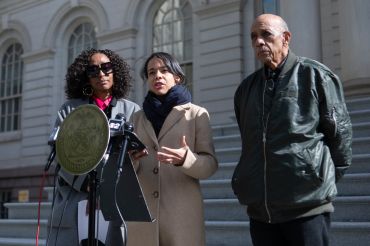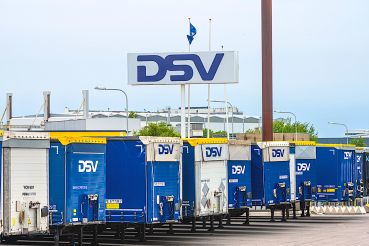
In 2009, the building sales market in New York City sucked. I mean, it really sucked. Volume hit an all-time low and the general demeanor of participants in the marketplace was subdued at best. Provided below is an overview of the market; if you are a frequent reader of Concrete Thoughts, you know that I prefer to discuss conditions in terms of numbers and statistics rather than adjectives. The analysis that follows will show you just how bad the building sales market was in 2009.
The marketplace that I will cover here is New York City, leaving out Staten Island. Our statistical sample includes approximately 165,000 properties. In 2009, there were $6.3 billion worth of building sales transactions (this includes all sales above $500,000 in value). This level of sales was down 75 percent from the $25.3 billion in sales that occurred in 2008 and down 90 percent from the record $62.2 billion in sales that occurred in 2007.
Of this $6.3 billion in sales, 32.6 percent occurred in the office-building segment; multifamily properties made up about 20 percent of the dollar volume. Dollar volume dropped the most in Manhattan, which saw a 92 percent reduction from the peak; and the smallest drop was in Queens, which saw a 77 percent reduction in volume from the peak.
In 2009, there were 1,436 buildings sold, which was down 54 percent from the 3,144 buildings sold in 2008 and down 71 percent from the 5,018 that were sold in 2007. The most active segment within these sales was multifamily, which saw 443 buildings traded, or roughly 30 percent of the total. Office buildings, while making up nearly a third of the dollar volume of sales, accounted for only about 3 percent of the number of buildings sold, with 50 buildings trading hands.
If we compare the 90 percent reduction in dollar volume to the 71 percent reduction in the number of buildings sold, it is very clear that we saw a bias toward smaller transactions in 2009. The main reason for this bias was the condition of the debt markets. We started to feel the effects of the credit crisis, tangibly, in the summer of 2007. It was at that point that many of the commercial banks and money center banks withdrew from real estate lending.
In New York, we were fortunate that we have very active community and regional banks that continued to lend throughout the recession. These lenders, however, generally have a comfort zone of approximately $30 million on an individual loan basis. Given today’s average loan-to-value ratio of about 60 percent, this creates a plateau at about $50 million, below which financing is generally available and above which financing becomes more challenging. It is for this reason that we saw this trend toward smaller transactions last year.
We like to express the velocity of sales in terms of the number of properties sold out of the total stock. If we divide the 1,439 buildings sold by the total stock of 165,000, we come up with a turnover rate of 0.87 percent, an extraordinarily low figure. For perspective, the average turnover rate, going back 25 years, is 2.6 percent. Since 1984, the lowest turnover rate we had ever seen was 1.6 percent, in both 1992 and 2003. Both of these years were at the end of recessionary periods, and they were also years in which we saw peaks in cyclical unemployment.
In 2007, the turnover rate was 3.04 percent. These figures are remarkable when you consider that even during a record-breaking year in 2007, the 3.04 turnover ratio would indicate an average holding period of 33 years for the average asset. The 0.87 percent experienced in 2009 extends this average holding period to more than 115 years! These figures are truly remarkable.
In 2009, the market with the highest turnover rate was northern Manhattan (defined as north of 96th Street on the East Side and north of 110th Street on the West Side), with a turnover rate of 1.33 percent. The lowest rate was seen in Brooklyn, which experienced turnover of 0.73 percent.
LAST YEAR, THE average building in New York City sold for $4.4 million. This was a drop of 65 percent from the $12.4 million average in 2007. Brooklyn and Queens had the lowest average building-sales price, at $1.7 million in each market; not surprisingly, Manhattan had the highest average building sale price, at $12.9 million. This average is down 75 percent from the peak of $52.5 million in 2007.
With regard to value, we saw very interesting dynamics in 2009. Average prices per square foot increased in the second half of 2009 compared to the first half of 2009. This was the case for all property types and was consistent across all boroughs. Under ordinary circumstances, we might be tempted to conclude that this indicates a bottoming in terms of value. Across all markets and all property types, however, we saw cap rates continue to expand and gross rent multiples (for multifamily) continue to decrease. This counterintuitive dynamic leads us to assume that this increase in price per square foot was merely a reaction to an overshooting to the downside in the first half of 2009,and the realization that better-quality assets were sold later in the year.
The average capitalization rate on walk-up apartment buildings citywide was 6.92 percent, and the average cap rate on elevator buildings was 6.12 percent (clearly, cap rates vary widely by location). Cap rates increased from their low point by 114 basis points for walk-ups and 144 basis points for elevator buildings. The highest cap rates were observed in the Bronx, with walk-ups trading at an average of 7.87 percent and elevator buildings registering an average of 8.10 percent. The lowest caps were, not surprisingly, in Manhattan, with walk-up buildings averaging 5.05 percent and elevator buildings averaging 4.52 percent.
The lowest gross rent multiples in the market were in the Bronx, averaging in the mid-sixes, and the highest were in Manhattan, which were in the thirteens. Reductions in multiples from the peak averaged 1.59 for walk-ups and 2.89 for elevator properties.
Value per square foot, on a market-wide basis, averaged $206 for walk-up buildings. The lowest average was in the Bronx, at $82, and the highest average was in Manhattan, at $482. In the elevator building class, the average price per square foot citywide was $173, with a low of $68 in the Bronx and a high of $452 in Manhattan. Interestingly, while elevator buildings are more highly sought after than walk-ups, the average price paid per square foot for walk-ups was higher than the average price paid for elevator properties. This is because the turnover of regulated apartments in elevator properties is substantially lower than the turnover in walk-ups-tenants aspire to “graduate” from walk-ups to better-quality elevator properties, and regulated tenants have very little motivation to move out of an elevator building.


